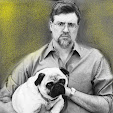Once again, I was swearing off war books, but someone told me to read a new book about the war, Kill Anything that Moves: The Real American War in Vietnam by Nick Turse, and I did. It is frightening and sobering -- and I've read a lot about the Vietnam War. Reading it reminded me of viewing the Holocaust film Shoah. Like filmmaker Claude Lanzmann, Turse interviewed eyewitnesses, perpetrators/soldiers, and surviving victims -- and the results are impressive and overwhelming.
Based on Turse's doctoral dissertation -- and painstakingly researched and sourced, though very readable -- this book has a central thesis: The American way of war in Vietnam resulted in mass killings of civilians in South Vietnam. The My Lai massacre was but one example of thousands of days of misery visited upon the people of Vietnam. The conditions that made war crimes possible were created at the highest levels of government and military command.
Now, 40 years or so from the wind-down of the war, Turse's observations might seem matter-of-fact. We all know how horrible Vietnam was (though usually we think of U.S. soldiers, not Vietnamese civilians), but what this book details is the pervasiveness of wanton murder of unarmed civilians throughout the course of the war.
Ultimately, it was policies and politics that drove the carnage. By early 1971, Telford Taylor, a retired army general who served as chief counsel at the Nuremberg trials, said in a nationally televised interview that Westmoreland might well have been prosecuted for war crimes. A field general, Julian Ewell, and his executive officer Ira Hunt were the primary proponents of pushing "body counts," which led to indiscriminate civilian killing in the populous Mekong Delta in late 1968 and 1969 -- in an operation called Speedy Express. Unarmed civilians were subject to artillery fire, helicopter attacks, and ground troop invasion. Civilians were shot for running from the approach of soldiers. The dead were inevitably counted as Vietcong, but consider one fact uncovered by a team of Newsweek reporters: Ewell's division reported killing 10,899 enemy troops, yet it recovered only 748 weapons. At one point 699 "guerrillas" were killed, but only 9 weapons captured. These non-correlative numbers indicate widespread killing of unarmed civilians.
Did the U.S. military care? In fact, Turse draws heavily on declassified documents from the Pentagon's War Crimes Working Group, which was set up in response to My Lai. Turse explains: "The group did not work to bring accused war criminals to justice or to prevent war crimes from occurring in the first place. Nor did it make public the constant stream of allegations flowing in from soldiers and veterans. As far as the War Crimes Working Group was concerned, these allegations were purely an image management problem..."
The policies and the cover-ups are what's central here. While Turse rightly lauds reporters like Seymour Hersh (whose writing broke the My Lai story), he also notes that the press sat on or effectively killed stories. (And hey, the New York Times hasn't reviewed this book, which seems unbelievable.) In 1972, Newsweek's Saigon bureau chief Kevin Buckley wrote, in part, "Four years here have convinced me that terrible crimes have been committed in Vietnam. Specifically, thousands upon thousands of unarmed, noncombatant civilians have been killed by American firepower. They were not killed by accident. The American way of fighting this war made their deaths inevitable." This lead was killed and the article watered down, and Speedy Express is now hardly known.
While Turse focuses on leadership, policy, and cover-ups, he also carefully documents atrocity after atrocity. There is the West Point colonel who hunts Vietnamese from his command helicopter, the decorated sergeant whose wildcat team kills and mutilates civilians, the personnel who routinely torture, and on and on. Turse looks at sexual crimes and South Vietnam prison conditions as well.
Many hard facts and figures back up Turse's points. Did the U.S. have a plan to help the people of Vietnam, so they would turn from communism (or nationalism or patriotism)? One telling figure: In 1967, USAID's total medical budget to support health programs in Vietnam equaled 0.25% of the total U.S. spend in the nation.
So, where does this leave us? Turse makes clear that we have not adequately assessed Vietnam -- and that failure continues to haunt our foreign policy and military.
Sunday, June 30, 2013
Subscribe to:
Posts (Atom)

